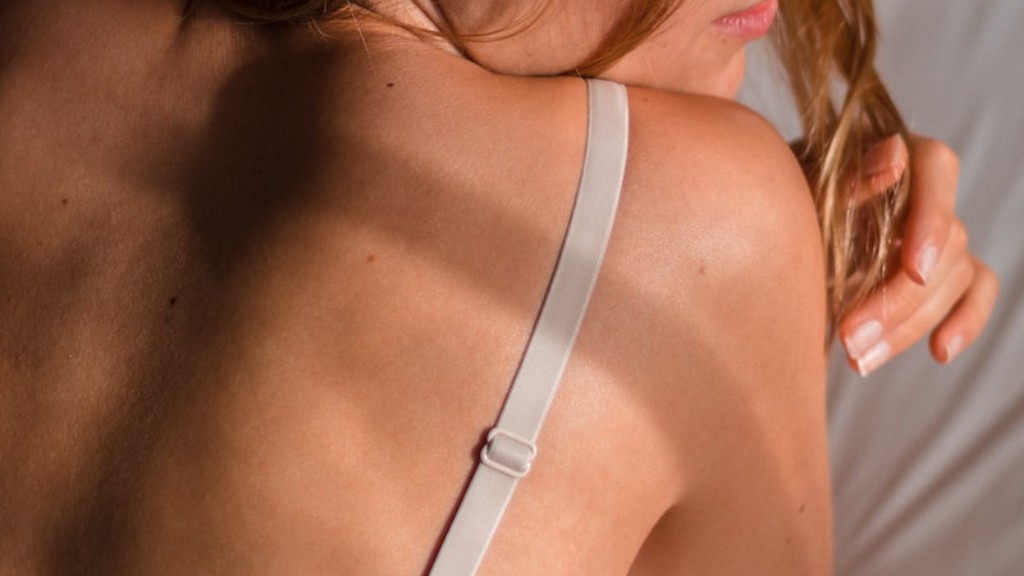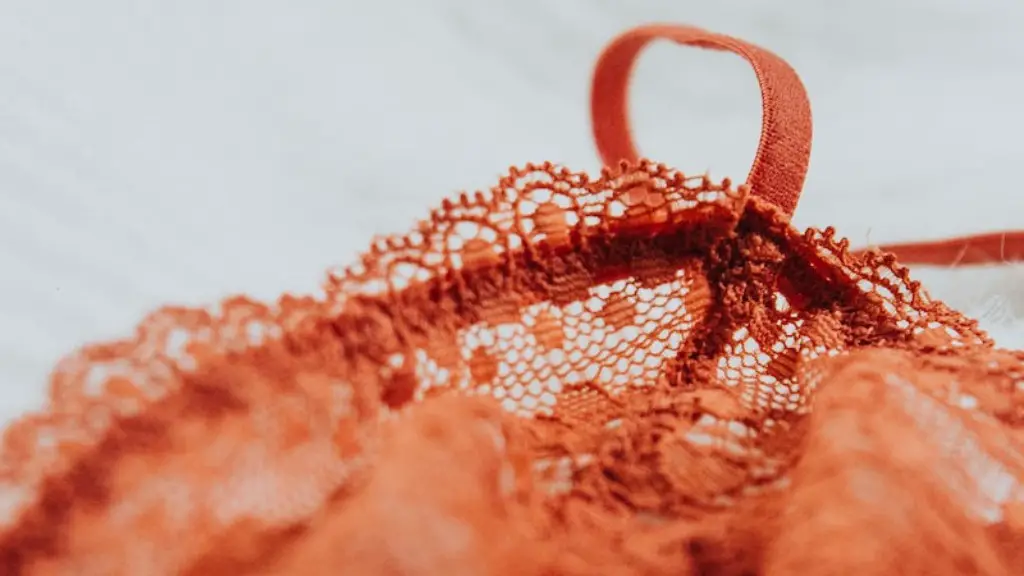Narrow lingerie elastic is a type of elastic that is used in lingerie and other garments. It is narrower than regular elastic and is often used in garments that require a more fitted look.
Narrow lingerie elastic is elastic that is used to make lingerie. It is usually made from a variety of materials, including nylon, polyester, and spandex. It is narrower than regular elastic, which makes it ideal for use in lingerie.
What are the different types of elastic waistbands?
Elastic waistbands are a great way to add comfort and style to your clothing. There are two main types of elastic waistbands: fold-down casings and applied casings. A casing is a fabric “tunnel” that encloses the elastic. There’s also a third category in which the elastic is sewn directly to the fabric (this method works best with knit fabrics).
Fold-down casings are the most common type of elastic waistband. They’re easy to make and can be adjusted to fit your waist. Applied casings are less common, but they’re easier to adjust and provide a more secure fit.
When choosing an elastic waistband, consider the type of fabric you’ll be using. Knit fabrics work best with direct-sew methods, while woven fabrics are better suited for casings. Choose a width that’s appropriate for the fabric and the look you’re going for. And be sure to test the elasticity before you sew it in place!
Elastics come in all kinds of widths, from 1/4 inch to 3 inch and up. Your pattern will typically specify which width of elastic to use, but in general thinner elastics are used for things like swimwear and necklines, while wider elastic is used for waistbands for skirts and pants.
What are the different types of elastic in garments
There are many different types of elastic, each with its own unique purpose. Braided elastic is often used for garments that need a little extra stretch, like swimwear or lingerie. Knit elastic is often used for garments that need to be able to move and breathe, like activewear. Woven elastic is often used for garments that need to be able to hold their shape, like dresses or skirts. Clear elastic is often used for garments that need to be invisible, like undergarments. Fold-over elastic is often used for garments that need a little extra decoration, like headbands or hair ties.
If you’re looking for maximum comfort when choosing elastic for waistbands, go for a wider width. Narrow elastic can dig into your body and is more likely to twist when inserted into a separate waistband. A width of at least 1 inch (3 cm) is ideal.
How do I choose the right elastic?
There are a few things to keep in mind when picking the right type of elastic for your project. First, consider if you will be sewing through the elastic or placing it in a casing. Remember, braided elastic doesn’t do as well being sewn through. Then, consider the weight of the fabric. Knit or braided elastic is better for lighter fabrics, while woven elastic is better for heavyweight fabrics.
Elastic is a key component in many garments, as it helps to provide a snug, comfortable fit. When measuring for elastic, it is important to take a snug measurement of the waistline in order to get an accurate reading. Add a 1-inch overlap to the final measurement to allow for some adjustability in the fit of the garment. Once the correct fit is achieved, cut the elastic to the appropriate length, overlap and stitch the ends together.
What size elastic do I need?
The elastic for a waistband should be approximately 2″ smaller than your waist measurement. This will ensure a snug and comfortable fit.
Braided elastic is a good choice for clothing that will see heavy wear, as it is more durable than other types of elastic. It can be sewn directly onto fabric or encased in a fabric casing, and is safe to be exposed to skin.
What is the best elastic to use for a waistband
This type of elastic is best suited for use in waistbands, as it lies flat and does not roll up when sewn into a garment. It is also available in a variety of widths to accommodate different types of projects.
In order to understand the effect of economic variables on the quantity demanded, we need to consider the concept of elasticity of demand. There are 5 different types of elasticity of demand, which are perfectly elastic, perfectly inelastic, relatively elastic, relatively inelastic, and unitary elastic.
Perfectly elastic demand occurs when a small change in price results in a very large change in quantity demanded. This happens when there are many close substitutes for the good or service in question. An example of this would be if the price of a particular brand of soda increased by $0.01, and as a result, the quantity demanded decreased by 100 cans.
Perfectly inelastic demand occurs when a change in price has no effect on the quantity demanded. An example of this would be if the quantity demanded for a necessity like food remains the same even if the price increases.
Relatively elastic demand occurs when a small change in price results in a significant change in quantity demanded. An example of this would be if the price of a cup of coffee decreases by $0.50, and as a result, the quantity demanded increases by 100 cups.
Relatively inelastic demand occurs when a small change in price results in a
What does heavy stretch elastic mean?
This elastic is perfect for exposed waistbands because it won’t narrow when stretched. It offers a stiff, strong stretch and can be used on heavier fabrics.
A solid can develop a restoring force when it is deformed in size or shape. This solid exhibits all three types of elasticity: size, shape, and volumetric.
Can you make an elastic waistband smaller
If you need to shrink an elastic waistband without sewing, you can do so by applying heat to the band. You can use a regular iron, a steam iron, or a heating torch. Be sure to test the heat on a small area of the band before applying it to the entire band, to avoid damaging it.
A standard waistband width is 125″ (finished width). It is drafted double the finished width as it is folded over.
Can you cut elastic width wise?
You can cut this knitted elastic any width and any length you want. Cut this 1-¼ Inch wide elastic lengthwise to a width of 1/4” without raveling, fraying or compromising the stretch. No more running to the store to have the exact width or stocking 5 types of elastic!
What is the standard thickness for a rubber band?
The standard thickness for a rubber band is 1/32. The following are common rubber band sizes ranging from size 8 to size 107: Rubber Band Size Chart.
What is my waistband size
To measure your waist, find the bottom of your ribs and the top of your hips. Place a tape measure around your middle at a point halfway between them (just above the belly button). Make sure it’s pulled tight, but isn’t digging into your skin.
If you find that your leggings are a bit too loose around the waist, you can easily adjust them to fit better. Just cut a small slit in the interior fabric and thread a smaller elastic alongside the bigger one. Pull to your desired size and then knot or sew it in place. A few stitches to sew the cut shut and you have a perfect fit!
Warp Up
Narrow lingerie elastic is a type of elastic that is used to create garments that have a snug fit, such as lingerie and shapewear. It is typically made from a material that is stretchy and has a high degree of elasticity, such as latex, spandex, or elastane.
Narrow lingerie elastic is a type of elastic that is used to make lingerie. It is narrower than other types of elastic and is usually used to make smaller items of clothing such as panties and bras. Narrow lingerie elastic is usually made from nylon or polyester and is available in a variety of colors.





